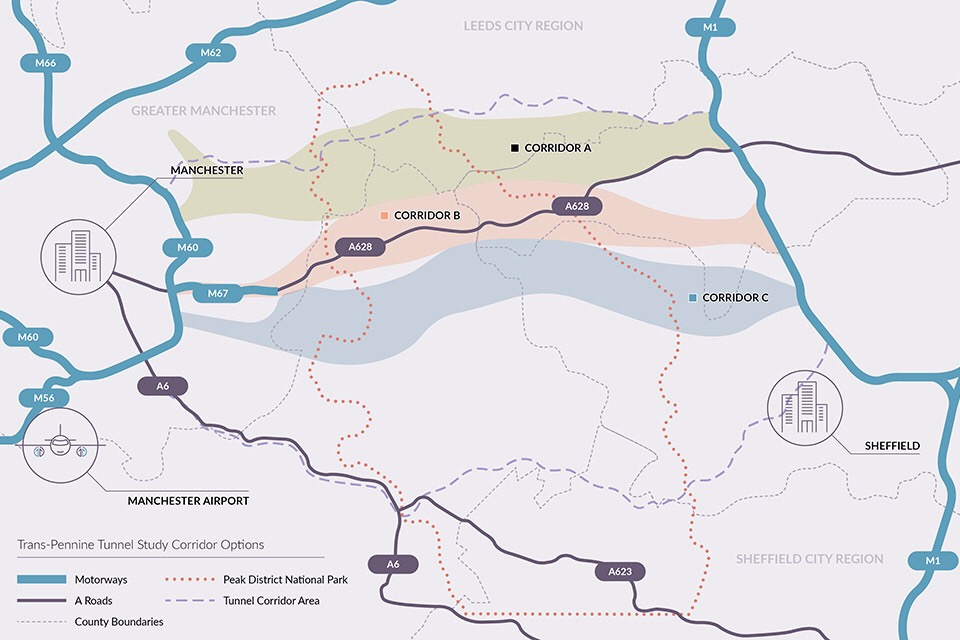Five routes have been shortlisted today for the Trans-Pennine tunnel described by the government as the most ambitious road scheme undertaken in the UK in more than fivr decades.
The Trans-Pennine tunnel study was launched by the government in autumn 2015, one of a number of studies aimed at addressing some of the biggest challenges facing the road network in the UK connecting Manchester and Sheffield across the Peak District.
Today’s study shows the continued strong case for the tunnel which could provide safer, faster and more reliable journeys for motorists.
The tunnel between Manchester and Sheffield could be a national first and almost halve journey times between the two cities.
All five routes join the M60 east of Manchester to the M1 north of Sheffield, with 4 options starting at the M67, and will see journeys cut by 30 minutes.
Three cooridors have been identified.
* Corridor A begins between A627(M) and Ashton-under-Lyne and crosses the national park at its narrowest point, roadly follows the M67, the A628 and the A616, extending to Barnsley near junction 37 of the M1.
* Corridor B would would join the M60 motorway east of Manchester, probably close to the M67, then tunnel under the A628 Woodhead Pass, to the M1 motorway north of Sheffield.
* Corridor C begins close to the River Tame between junctions 24 and 25 of the M60, passing to the north of the River Derwent Valley connecting near Junction 35 of the M1 north of the Meadowhall shopping centre.
The study also reveals revealed that ministers are looking at unusual ways to stop drivers developing “claustrophobia, disorientation and tiredness”, citing the Lærdal Tunnel in Norway and Zhongnanshan Tunnel in China – as sources of inspiration for tackling the problems.
The former, a twenty minute journey uses blue and yellow lighting to mimic a sunrise to keep drivers calm as they pass through a mountain range while the Chinese tunnel has fake clouds projected on to the roof and artificial palm trees and shrubs by the side of the road to relax drivers.
John Cridland, Chairman of Transport for the North, said
The study shows a tunnel beneath the Pennines would both boost the economy of the region, and potentially benefit the environment of the Peak District by reducing traffic in the national park.







